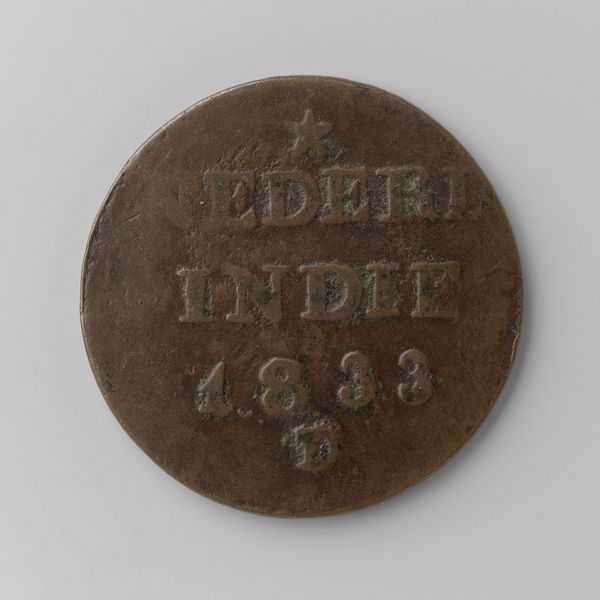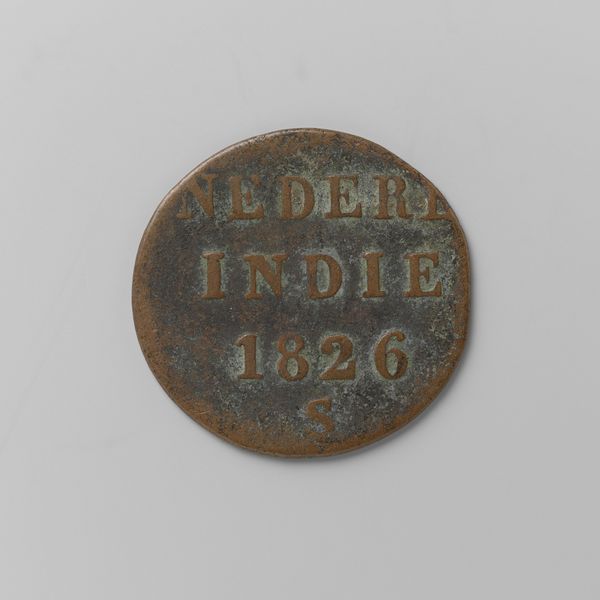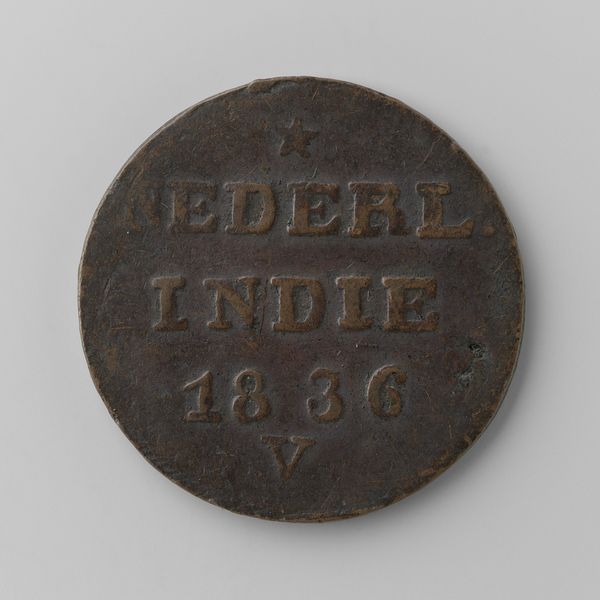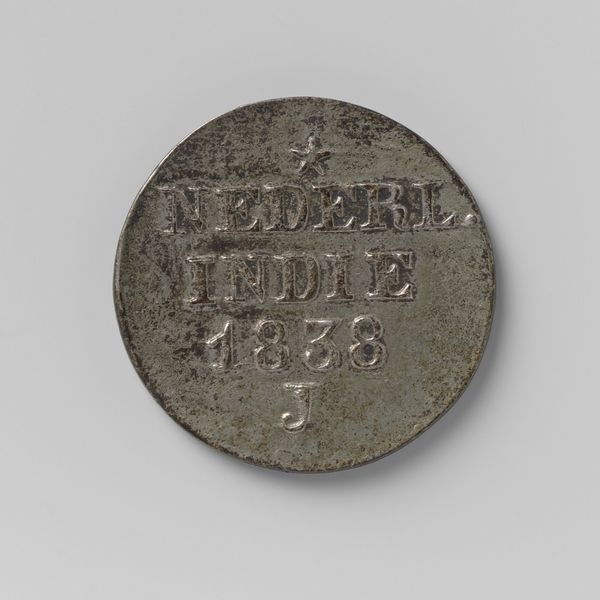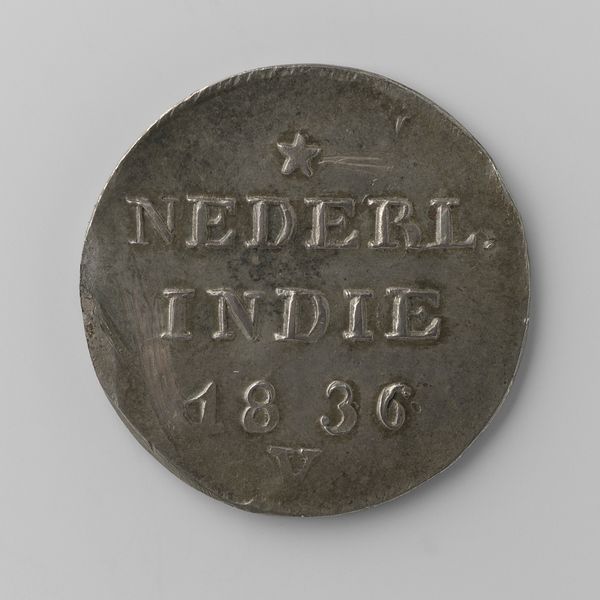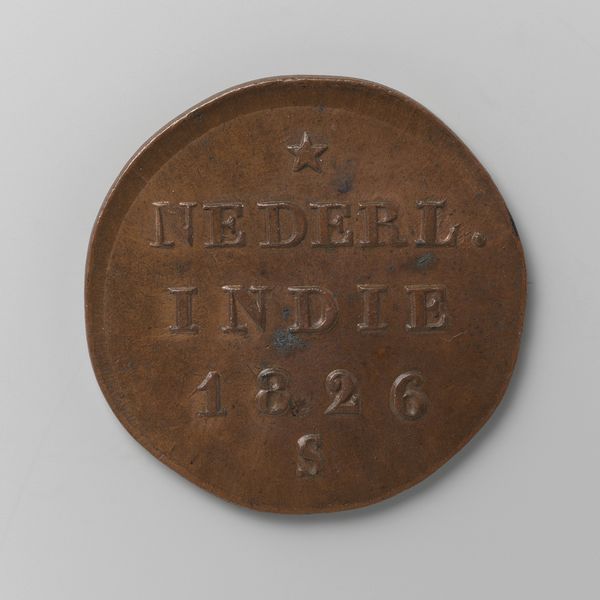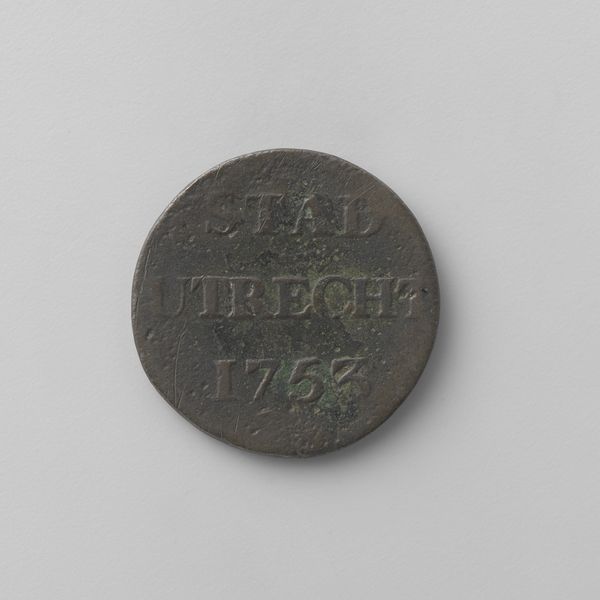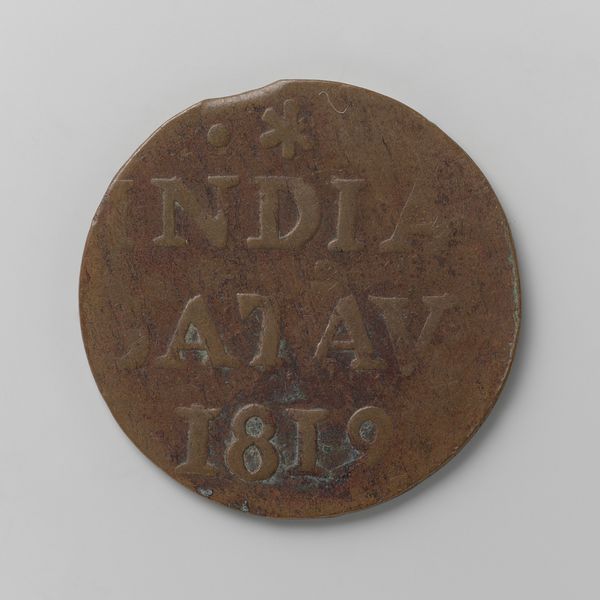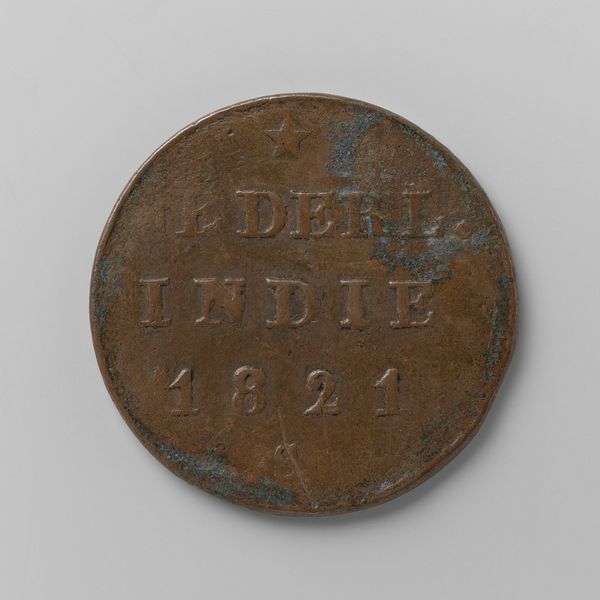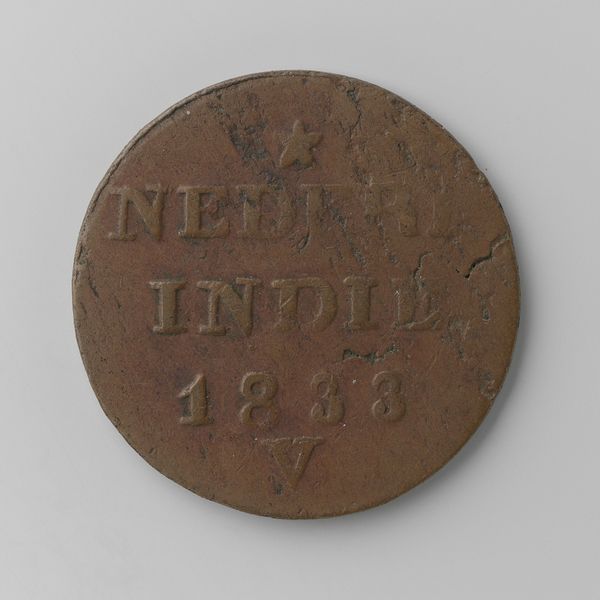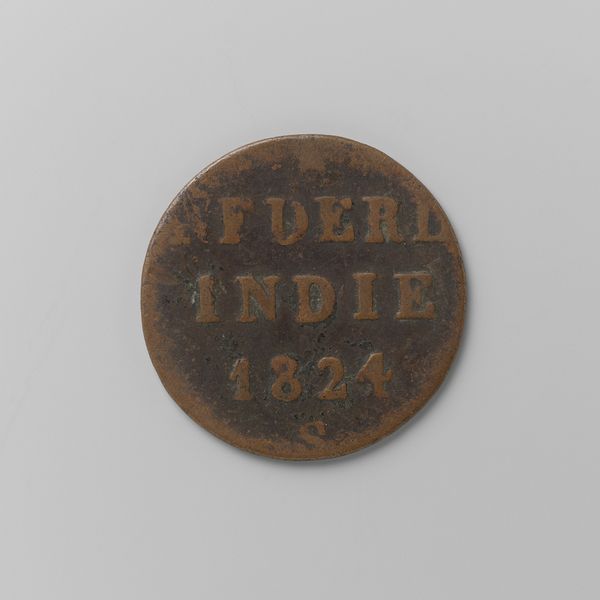
print, metal
# print
#
metal
#
geometric
#
ancient-mediterranean
#
islamic-art
Dimensions: diameter 2.1 cm, weight 2.91 gr
Copyright: Rijks Museum: Open Domain
Editor: This is a coin, titled "Cent van Nederlands Indie, 1839," made in 1839. It seems to be made of metal. The design feels so simple and practical. How do you interpret this work? Curator: Consider this coin as more than just currency; it’s a symbolic representation of power and a visual declaration of colonial presence. The very act of minting a coin imprints Dutch authority, doesn’t it? Look at the placement of the star; do you think this is mere decoration, or does it invoke some higher guidance? Editor: It seems a bit of both, but the stark simplicity makes it feel more functional than ornate, as if it's driving a specific message home. The geometric and symmetrical forms feel so austere. Does it perhaps aim for objectivity, in spite of colonial subjugation? Curator: The very lettering can be seen as more than words—they are imbued with political intention, wouldn’t you agree? And while the aesthetic seems quite removed from typical Islamic art, bear in mind that Indonesia, or "Nederlands Indie," had a predominantly Islamic population. Can you see an interplay of cultures, where perhaps visual choices were intended to appeal across cultural lines, or, perhaps, to assert dominance? Editor: That is fascinating to think about. I hadn't considered how deeply intertwined culture and power could be on something as everyday as a coin. Thanks, that really clarifies the coin's symbolism. Curator: The past speaks volumes, even through the smallest of objects. Looking closer at these symbols lets us unpack complex histories that were part of nation building.
Comments
No comments
Be the first to comment and join the conversation on the ultimate creative platform.


